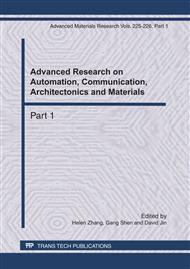p.433
p.437
p.442
p.449
p.453
p.457
p.461
p.465
p.469
Speech Signal Denoise Based on LMS Algorithm in Simulink
Abstract:
The adaptive noise cancellation system by LMS algorithm need not to know the prior knowledge of input speech signal and noise, and can carry out denoise. In this paper, we present a general approach to using Simulink to build adaptive filter which may denoise for noise added speech signal. Simulation results show that this method has the good suppression ability for the noise of collection speech signal.
Info:
Periodical:
Pages:
453-456
Citation:
Online since:
April 2011
Authors:
Keywords:
Price:
Сopyright:
© 2011 Trans Tech Publications Ltd. All Rights Reserved
Share:
Citation:


